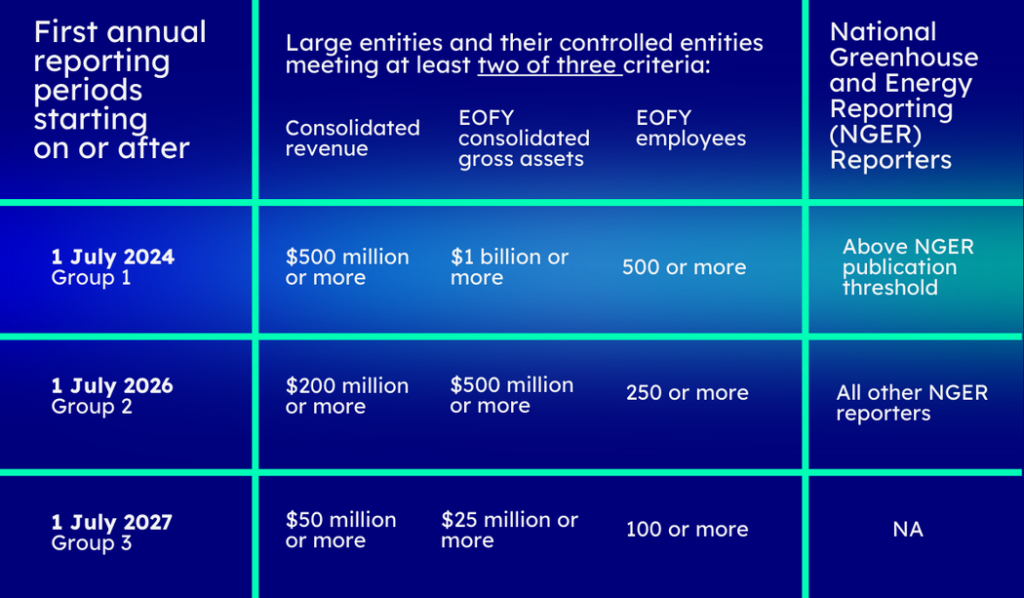A year in review: The year ESG and Climate-Related Financial Disclosures were redefined
- Updated
- 4 min
Environmental, Social and Governance (ESG) considerations took center stage in 2024, marking a pivotal shift in how companies around the world, including in Australia, disclose environmental and climate-related risks. Consequently, what was once seen as a voluntary or investor-driven initiative is now becoming a regulated, strategic imperative, with continued momentum heading into 2025.
This year saw the maturing of ESG and climate-related financial disclosure into something more than a reporting exercise — it became a foundation for credibility, resilience, and long-term value. Moreover, with global bodies releasing standards like International Financial Reporting Standards (IFRS) S1 and S2, and investors mounting pressure for consistent, comparable data, the landscape changed significantly — in fact, it redefined the way companies approach disclosure.
In Australia, regulators like ASIC and APRA are adopting global ESG standards. As a result, stakeholders expect companies to go beyond compliance and link climate risks to financial performance, transition plans, and strategy. Furthermore, as assurance and anti-greenwashing scrutiny grew, stakeholders also raised the bar for rigor, relevance, and results.
In this year-in-review, we explore the major developments that shaped ESG and climate-related financial disclosures — and what they mean for the road ahead.
At a glance
Understanding your responsibility under new Environmental, Social and Governance legislation
Australia’s new mandatory climate-related financial disclosures will significantly enhance how businesses communicate climate risks and opportunities. By aligning with global standards, these disclosures aim to build investor confidence while also supporting the broader net-zero transition.
Beginning on 1 July 2025, businesses that meet any of the following thresholds—$50 million or more in revenue, $25 million or more in assets, or over 100 employees—must include climate-related data in their annual reports. Furthermore, regulators will have the authority to take action if companies fail to comply with these obligations.
To ease the transition, the government has planned a phased rollout, ensuring that businesses have adequate time and support to adapt. Stakeholders expect this approach to enhance transparency, ultimately fostering greater investment in Australia’s green economy.

Learn more with:
- ESG in 2025: Why it matters more than every before
- Unlocking ESG: Why it matters and how to enhance compliance
- Aligning with global standards: A practical ESG guide for every organisation
- ESG Roadmap: Courses you need to comply
- Your essential ESG whitepaper: Key insights for Australian businesses
- Compliance Corner Podcast | Future proof or fall out: The ESG question
Summary of changes
Environmental, Social and Governance mandatory climate-related financial disclosures
- As of 1 January 2025, large Australian companies and financial institutions (Group 1 entities) are required to incorporate climate-related financial disclosures into their annual reports. This mandate follows the enactment of the Treasury Laws Amendment (Financial Market Infrastructure and Other Measures) Act 2024, which received Royal Assent on 17 September 2024.
- Group 2 and Group 3 entities, as defined under the Corporations Act, will be required to comply in subsequent reporting years as part of a phased implementation approach.
- The disclosures must align with the Australian Sustainability Reporting Standards (ASRS), specifically:
- AASB S1: Sustainability-related Financial Information
- AASB S2: Climate-related Disclosures
- These standards are based on the international IFRS S1 and S2 issued by the International Sustainability Standards Board (ISSB), supporting alignment with global disclosure requirements.
- The standards require entities to report on:
- Climate-related risks and opportunities
- Their governance, strategy, and risk management processes
- Metrics and targets, including greenhouse gas emissions.
- The implementation of these standards is expected to enhance transparency, accountability and investor confidence, by providing consistent and comparable information on how companies are addressing climate-related issues. This move aligns Australia with other jurisdictions, including the EU, UK, New Zealand, and Japan, in establishing a rigorous and internationally aligned climate disclosure regime.
- The Australian Securities and Investments Commission (ASIC) will be responsible for compliance and enforcement.
- Company directors may be held accountable for misstatements or omissions in sustainability disclosures, in line with existing obligations under the Corporations Act.
- To support compliance, entities are encouraged to proactively engage with these requirements and prepare for the upcoming reporting obligations.
Final thoughts: Lead the change in climate reporting
The shift towards mandatory climate-related financial disclosures is more than just a regulatory change—it’s a call to integrate climate risk management into the core of business strategy.
Now is the time to review your reporting practices, empower your leadership teams, and take proactive steps to meet these new disclosure requirements. Compliance is only the first step—lasting impact comes from embedding sustainability into your company’s culture and decision-making.
If you need support navigating these new obligations, we’re here to help—with practical advice, resources, and tools tailored to your organisation’s needs.
Ready to lead with confidence?
We’re here to help you meet new climate reporting standards with clarity and confidence.

Get the latest news
Stay updated with the latest news and expert insights on compliance, legislation, and industry trends.
Share
Latest news & insights
- 4 min
